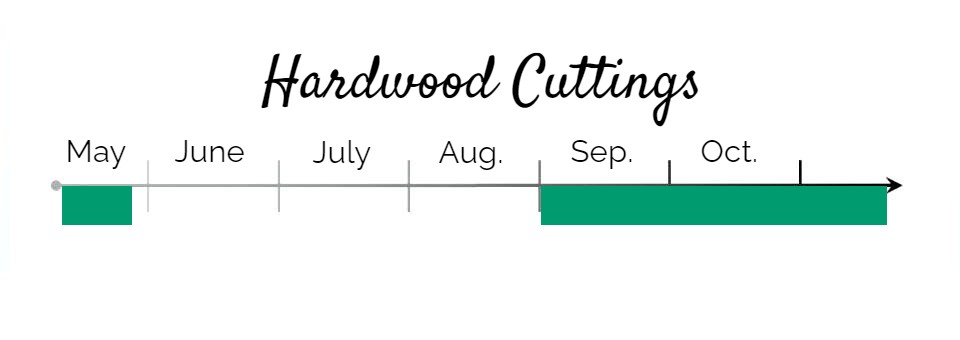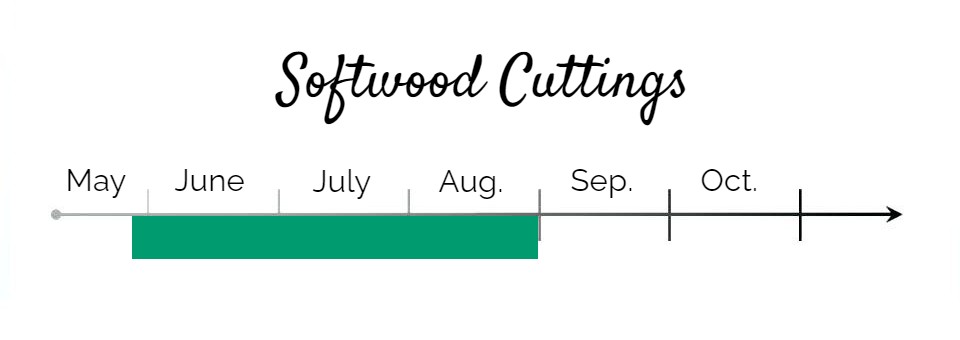

This guide is meant to teach you how to propagate common Lilac (Syringa vulgaris) and hopefully make it easier for you to sell them at your own nursery.

Hardiness Zone: 2 – 7

Soil Type: Well-drained chalk, sand, loam, clay

Water: Average

Exposure: Full Sun
Common Lilac (Syringa vulgaris) is a perennial shrub hardy up to zone 2. It’s a fragrant, easy-to-grow shrub that is iconic to colder climates. It has few pests and resists deer, all in all, it’s a beautiful, low-maintenance shrub.
Common lilacs have heart-shaped leaves with an entire margin (smooth). The leaves have an opposite to whorled arrangement on the stems.
Within all lilacs, this species is one of the longest-blooming ones. Their beautiful flowers appear during Spring and last 3-4 weeks.
Common lilacs are great shrubs to use as hedges, screens, and specimens.
Wildlife Value
The fragrant flowers attract pollinators like butterflies and birds such as hummingbirds.
Best Way to Propagate Common Lilac
Division
A great way to propagate common lilac is by division. Why? Because they are a suckering plant.
Suckering plants naturally send out roots underground called rhizomes. These nutrient-rich rhizomes send up new clones of the plants nearby and create a colony.

- First, locate your mother plant, and look around to see new shoots.
- Once you find the shoots, use a spade and dig them out. You’ll notice a big root coming from the mother plant, that’s the rhizome.
- Take out the shoot from the ground, and cut off some of the rhizomes out with it. There’s some precious energy in there.
- Prune most of the leaves from the shoot, leaving some at the top, and plant directly into a pot with soil. Voila!
Cuttings
Another great method of propagating common lilac is by taking hardwood or softwood cuttings. Each depends on the time of the year you harvest them.

When harvesting lilac hardwood cuttings, you want to take them in early fall just before the plant goes into dormancy.
- First, take some hardwood cuttings off the main stem, long enough to have 3 nodes each. Roughly 6-8 inches.
- Make sure the width of the cutting is about pencil width, then cut right below the node.
- Next, scrape the bark off the bottom inch of the cutting, especially at the wooden joint.
- Remove most of the leaves off the twig and leave some at the top
- Dip in rooting hormones and then push them into your sandy propagation beds.
- Keep watering the cuttings, sand shouldn’t be too wet but it should stay moist.
- Roots will form within 6-8 weeks, let the snow fall on top during winter, snow isolates very well.

When harvesting softwood cuttings, you want to get them at the time when the plant is actively growing. That’s generally late May until the end of August.
For common lilac, the propagation method is nearly the same for hardwood cutting as it is for softwood.
The only difference is that you should cut them a bit shorter, around 5-6 inches each.
Dip them in rooting hormone and plant them into your sandy propagation beds, water daily.
Common lilac softwood cuttings take around 3-4 weeks to root.
How to Prepare Common Lilac for Sale
When your cuttings have rooted, all you need to do now is to transplant them in a well-drained pot with some soil. Afterward, just place them in a sunny area of your nursery, and water them daily.
Pruning
You have to be careful when you prune your lilacs. The following season’s flowers will grow off the tips of last year’s growths.
Keep this in mind when you prune the branches. Keep several main branches that will hold the flowers and snip any branches growing too far upward or wayward.
With lilac and most plants, prune when the plant is dormant. Like early spring before the buds open or after the leaves fall off in autumn.
That’s it!
Still trying to figure out how to start your plant nursery? Check out our plant nursery guide here.

